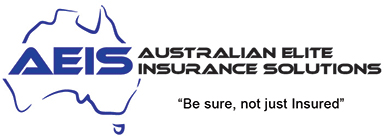Bushfire, cyclone, flood – Australia is no stranger to natural disasters.
Their effects can be devastating for small businesses that have their operations disrupted or their assets damaged or destroyed.
Here’s a guide on what to do if your business is impacted to help with your recovery.
- Ensure everyone is safe. Depending on the circumstances, that could mean evacuating your premises or hunkering down until the danger has passed.
- Contact emergency services. If you or your team are in a life-threatening situation, calling 000 will put you in contact with the police, fire and rescue and ambulance services in your area.
- Assess the damage. As soon as it’s safe to do so, conduct a preliminary assessment of the damage. Take photos and detailed notes – they’ll be useful later if you decide to lodge an insurance claim.
- Notify your insurance company. The sooner you’re able to commence the claims process, the faster your business should be able to recover. You’ll be asked to provide evidence of your losses and may need to meet with an assessor who’ll inspect the damage where it is.
- Enact your disaster recovery plan. If you’ve adopted sound risk management practices, you’ll already have a recovery plan which details how your business will respond to a range of climate related risks. If not, you’ll need to develop one, to get your business stabilised. It should cover the short-term actions you need to take, such as relocating to alternative premises or shifting your activities online, and your longer-term rebuilding strategy.
- Investigate government assistance. Both federal and state governments offer a range of assistance measures, including concessional loans or grants, to help small businesses get back on their feet after a natural disaster is declared. The Department of Home Affairs’ Disaster Assist service can provide more information about disaster recovery payments. Meanwhile, gov.au offers advice to help small businesses recover.
- Talk to your insurance broker. Navigating the insurance process in the wake of a natural disaster can be time consuming and stressful. Your insurance broker is there to help you carry the load. Enlisting their assistance to liaise with your insurer can help you achieve a satisfactory settlement sooner and free you up to focus on getting your operations back on track
- Plan for the future. Once you’re up and running again, you’ll need to update your business continuity plan to include the lessons you’ve learnt from the experience. You may also wish to invest in risk mitigation measures, such as flood proofing your premises or acquiring technology that enables your team to work remotely.
Cover to help your business recover
Insurance is there to help your business recover from adverse events, including damage and disruption caused by natural disasters. Having the right level of cover means you won’t be significantly out of pocket, in the event of a claim. If you’d like to review your policies to ensure you’re adequately protected, contact your broker today.
Important notice
This article is of a general nature only and does not take into account your specific objectives, financial situation or needs. It is also not financial advice, nor complete, so please discuss the full details with your Steadfast insurance broker as to whether these types of insurance are appropriate for you. Deductibles, exclusions and limits apply. You should consider any relevant Target Market Determination and Product Disclosure Statement in deciding whether to buy or renew these types of insurance. Various insurers issue these types of insurance and cover can differ between insurers.
For the original post, visit Steadfast


If you would like to discuss your insurances further, please feel free to contact us:
Click this link to book your free appt Book an appointment


Recent Comments